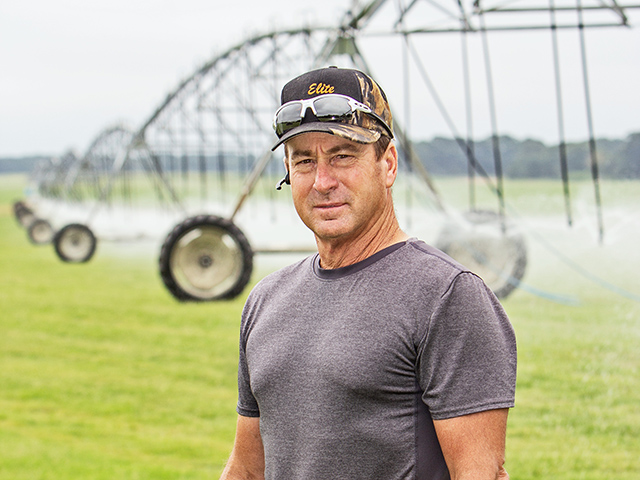Irrigation Upgrade Scores Big
Irrigation Extra - Irrigation Upgrade Scores Big
Wayne Carter looked at his July electric utility bill for $6,500 and smiled. July was a dry month in Oklahoma and the first full month he'd run his new all-electric irrigation system watering 900 acres of bermudagrass at Elite Sod Farms, near the Red River, south of Colbert, Oklahoma.
"We ran all 14 pivots nearly every day in July, and that was the total electric bill for the pumps on the river and the pumps feeding the pivots," he explains. Before he expanded his operation, Carter was using a diesel-powered pump to lift water out of the river to feed six center pivots.
The pump on the river used a 180-hp diesel engine and was burning 300 gallons of fuel a day. Two 155-hp pumps took water from holding ponds. Each burned 120 gallons a day at about $2.70 per gallon, or $1,458 a day. That system was watering only 530 acres.
July's figures showed Carter a "first-month" energy savings from substituting kilowatts for diesel fuel of $37,240, a figure he says puts him on track for a three-year amortization of the pumps and pivots it took to nearly double his sod operation acreage. Of course, nine new Valley center-pivot sprinklers and a systemwide upgrade to Nelson Uni-Flo nozzles at the bottom of evaporation-fighting drops also boosted water-application efficiency significantly.
BOOSTED FLOW
"We can run a constant 28 [pounds per square inch] at all of our center pivots, with flows of about 1,000 gallons per minute with the new system," Carter explains. "Also, we save water and pumping costs because we can precisely apply the 0.25 to 0.30 inches of irrigation per acre that our growing sod needs quickly and efficiently."
P[L1] D[0x0] M[300x250] OOP[F] ADUNIT[] T[]
With his old side-roll units, Carter could never pump flows or pressures like that. About an inch of application was as accurate as he could do. "We lost thousands of gallons of water when we had to stop those units, drain them and move them manually to the next section of our grass that needed water. We always had wet spots, and our irrigation was always uneven," he says.
Elite Sod Farms supplies the booming building/landscape market in the nearby Dallas-Fort Worth area with two harvests per year of U-3 and Tifway 419 sod. In all, that amounts to nearly 10,000 square yards per acre of "instant lawn" for the Metroplex builders. In addition, Carter's operation is involved in irrigated corn, alfalfa, wheat and bermudagrass hay production, as well as containing a 450-cow commercial herd and grow yard for stocker calves.
LABOR SAVINGS
Carter has run Elite Sod Farms for 22 years and says throughout, finding adequate qualified labor has been a problem.
"That situation continues to get worse," he says. "But, when we expanded and upgraded our irrigation, we equipped all of our new pivots and retrofitted the older units with wireless controls."
Now, instead of spending a half-day with several people driving to the river and holding ponds to open valves and start pumps, and then visiting each irrigation rig to make sure they are working properly, three of Carter's six employees have CropSense controllers on their cell phones. They can do the work from the cab of their pickups or from the office with a few screen commands.
The high-labor startup procedure was an everyday chore, and then there was the daily shutdown, many times in the middle of the night, which was a reverse of the same routine.
"The added convenience and savings in man-hours is astronomical on top of what we're saving in pumping expenses," Carter explains. "The up-front cost is very expensive, but again, we've doubled our production, and we have tremendous savings that accrue every day. We're doing all this, and we're down one person from what we employed before the change."
RECLAIM BRUSHLAND
For years, Elite Sod Farm was a 400-acre operation on the Red River bottoms in far-south Bryan County. Carter added 170 acres for production in 2018 and another 270 acres for production in 2019. The new farms are on higher ground than the original. He cleared brush and contoured the land to control waterflow and eliminate draws and ditches. Some were 20 feet or more deep.
"We bought a T3RRA Cutta laser system and drove the fields to map them, and designed a grade that would give us a gradual flow rather than abrupt runoff into creeks and gullies," Carter explains. "These are light sandy soils deposited by years of south winds blowing sand northward from the river, and they will wash if they are not covered."
[PF_1020]
(c) Copyright 2020 DTN, LLC. All rights reserved.




